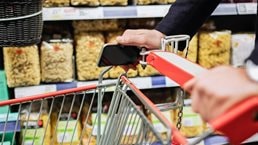Amazon’s Prime Day started in 2015 and has rapidly grown to become a major event on the retail calendar, alongside Black Friday and Cyber Monday— and for Amazon, bigger than either of them. This year, it attracted more attention than ever, with 80 percent of US consumers aware that it was happening and three times as many shoppers buying items as in 2015. Consumers were positive about Prime Day overall, with 68 percent rating the offers they encountered very good or exceptionally good.1
Stay current on your favorite topics
Media coverage of this year’s Prime Day, as in prior years, focused mostly on consumer sentiment and overall sales. But few looked closely at where the growth and value came from, or what the business implications were. Following on McKinsey’s analysis of the first Prime Day, this article seeks to fill that gap. Working in close collaboration with our partner Jumpshot—a digital-intelligence company that collects consumer clickstream data across a global panel of 100 million devices to understand behavior on e-commerce marketplaces like Amazon—we looked at who emerged as winners this year—and who didn’t.2
While Prime Day was another big win for Amazon in terms of sales and new members, the big increase in sales of Amazon devices, which lock customers into the company’s ecosystem, and strong results for several of its private-label brands are noteworthy and highlight how Amazon’s retail strategy is expanding. But there were other winners, too, including brands that partnered with Amazon and, surprisingly, retailers that went head to head against it.
Where the wins happened for Amazon
In previous years, Amazon’s main goal for Prime Day had been to use attractive deals to encourage consumers to sign up for Prime membership. But this year, Amazon expanded its ambitions by seeking not only to drive Prime memberships but also to lock consumers more tightly into its growing ecosystem of products, services, and media.
With over 100 million items sold, Prime Day 2018 was the largest shopping event in Amazon’s history. It boasted a 6 percent increase in conversions over last year’s Prime Day, and a 121 percent boost in conversions compared with the prior week. Also, more new members joined Amazon Prime than on any other day in the company’s history, and the event expanded to 17 new countries, with further expansion likely in the future.
Bringing more customers into Amazon’s ecosystem
Amazon’s Prime program has shown remarkable power to create loyal consumers. Amazon tried to go even further this year on Prime Day, by emphasizing its wider ecosystem. Hardware devices are a key way to connect consumers with the Amazon ecosystem and also to reinforce Amazon’s growing Alexa voice-market leadership.
Amazon promoted its devices heavily on Prime Day this year, with four Amazon products and only one Alexa-equipped Toshiba TV featured “above the fold”— on the top row on Amazon’s home page.3 Discounts ranged from 23 to 50 percent across the Amazon hardware portfolio, with ten devices, including the Fire TV Stick and Echo, featured at their lowest prices ever.
This focus paid off, as Amazon devices were six of the top ten products purchased on Prime Day this year, each seeing a lift of 40 to 100-fold in conversions when compared against the prior month-and-a-half (Exhibit 1).4 The two global bestsellers for Amazon were its smart-home devices: the Fire TV Stick with Alexa Voice Remote and the Echo Dot.5

Echo and Kindle sales generate long-term revenues for Amazon over time, through subsequent purchases of Amazon media and books, and serve to lock customers more securely into the Amazon ecosystem. For example, consumers who buy an Echo increase future spending at Amazon by ten percentage points compared with those who do not, and Amazon obtains an additional $15 in revenue per quarter for every customer who purchases a Kindle. To reinforce this linkage, hardware deals were paired with steep discounts on media and content offerings, including trials of Kindle Unlimited at $1, Amazon Music at $1, and Audible at $3.95.
Would you like to learn more about our Marketing & Sales Practice?
Fueling Amazon private labels
Amazon aggressively featured its private-label brands on Prime Day, offering 20 to 40 percent off select items across multiple categories. Amazon’s effort to push these in-house brands, however, saw mixed success. While there was success seen with private labels in the home, men’s apparel, and electronics accessories categories, deals on Amazon private labels in everyday household/consumer product categories drove less impact.
Amazon private labels that experienced strong results on Prime Day were Pinzon, with a sixfold conversion lift over the home and baby categories, as well as Amazon Essentials, with a fivefold conversion lift, and Goodthreads, with a threefold conversion lift over the men’s apparel category6 (Exhibit 2).

The company’s top-selling private-label brand, AmazonBasics, experienced only a 0.5-fold conversion lift on Prime Day over the categories in which its products are sold (electronics accessories, home, office goods, and toys), in part due to its larger size (eightfold more conversions than any other private label brand on Prime Day). Several other Amazon private labels—for example, Presto! and Daily Ritual—saw little or no lift relative to their categories on Prime Day.
Amazon has accelerated its launch of private labels in recent years, with more than three-quarters of its 80-plus brands introduced over the past eighteen months. An emphasis on these brands during this year’s Prime Day was understandable, and a similar focus can be anticipated in the future.
Less success with Whole Foods Market
Amazon also sought to use Prime Day to reinforce its Whole Foods Market (WFM) omnichannel play by offering a variety of deals to shoppers: $10 in Amazon credit to anyone who shopped at Whole Foods during the week of Prime Day, $20 in Amazon credit to Prime members who shopped at Whole Foods ($10 at WFM and $10 at Amazon), and up to $40 off at WFM for Prime Visa cardholders.
A number of Prime Day deals were also featured in Whole Foods stores, including deep discounts on strawberries, cod, chicken breasts, and tea cookies, and buy-one-get-one-free offers on Allegro coffee and Honey Nut Cheerios. Prime Day was also the subject of prominent signage throughout Whole Foods stores.
Despite efforts to link Prime Day with Whole Foods, data collected by OMNI by McKinsey, PlaceIQ, and InfoScout showed no significant increase in Whole Foods retail-store traffic during the week of July 11-17 and no significant uptick in total spend. Prime Day did not appear to draw new consumers into stores nor convince existing customers to spend more.
These results suggest that grocery may not be as well suited to occasion-based events like Prime Day as other categories. Consumers have grocery routines, and limited-time or one-day offers may not sell strawberries the way they sell a large TV or an Instant Pot.
Other winners: Amazon’s partners
It wasn’t cheap to participate in Prime Day. But in a vast sea of offerings, brands that invested in Prime Day deals and search successfully leveraged the overall increase in Amazon traffic.
Leading up to the event, Amazon advised brands to be prepared to spend more on keywords to win search during Prime Day.7 Spend on search was critical: products on the first page of a product search get two-thirds of all clicks.8 Big discounts were also a prerequisite for gaining consumer attention on Prime Day. A group of “Hero” SKUs, which relied on deep discounts and heavy promotion, including mentions on several Prime Day deal-tracking websites, were some of the biggest winners of the day.
Hero products in the electronics category were Bose noise-canceling headphones (discounted at 55 percent, with a 42-fold increase in conversions over its category) and SanDisk’s 64GB memory card (discounted 44 percent with a ninefold increase in conversions over the category).
In home goods, another hero was the Anova Sous Vide Precision Cooker which had one of the largest discounts (64 percent) and saw a 28-fold increase in conversions compared with the home category. Other strong performers in this segment were the six-quart Instant Pot (41 percent discount, 300-fold increase in conversions over the category) and Dyson V8 Absolute vacuum cleaner (27 percent discount, 55-fold increase in conversions over the category).
In the health category, the top performer was the 23andMe DNA Test (50 percent off, 200-fold increase in conversions over the category). And in the outdoor category, the LifeStraw personal water filter—an unexpected deal—was one of the top sellers of the day (offered at 60 percent off, 110-fold increase in conversions over the category).

More Americans feel financially secure, but they’ve learned new shopping habits
Surprising winners: Competitors that went head-to-head with Amazon
Interestingly, some retail competitors chose to go head-to-head with Amazon, seeking to take advantage of increased Prime Day shopping by offering deals on their own websites. The winners tended to be competitors that mirrored Amazon’s approach, with limited-time offers, steep discounts on electronics, and special promotions for members. Some of the retailers that chose this path were Target, Best Buy, Lowe’s, and Costco.
Target held a big one-day-only sale, offering a free six-month membership for same-day delivery and 30 percent discounts on private-label brands and Google products. This approach was successful, as Target saw a 129 percent lift in conversions over the previous week, comparable to the 121 percent conversion lift that Amazon experienced on Prime Day.
Some of Target’s deals on featured products were comparable to those offered by Amazon, such as 15 to 35 percent discounts on the Instant Pot, Dyson vacuums, iRobot Roomba, LED TVs, and Google Home and Nest smart-home devices. But on these deals, Target experienced at most an 11-fold increase in traffic and a 0.4-fold increase in conversions, far less than Amazon achieved with offers for the same brands or similar products. In other words, individual brands that partnered with Target performed reasonably well—but many that partnered with Amazon performed spectacularly.
Best Buy offered two-day deals focused on electronics and an Apple shopping event. Its efforts resulted in a 98 percent lift in conversions over the prior week. Lowe’s offered a two-day 10 percent sitewide discount for MyLowe’s members and a rebate on a Google Home Mini for consumers who spent at least $150, which led to a 73 percent lift in conversions over the prior week. Costco marketed two--day “instant” online-only and basket-building deals, yielding a 50 percent lift in conversions over the prior week.
Other Amazon competitors, by contrast, did not focus on Prime Day as a big shopping event, but instead continued with their existing summer strategies. This may have been a missed opportunity, as retailers without a bold Prime Day plan saw a very limited increase in conversions on Prime Day compared with the prior week—10 percent or less—and some even experienced declines.
Implications for brands and retailers
What does Prime Day 2018 tell us about what is likely to happen on future Prime Days and in the holiday shopping season to come?
For Amazon, Prime Day has been transformed from a drive to increase Amazon Prime membership to a drive to promote Amazon’s offerings. Amazon is unlikely to scale back on a strategy that seeks to feed its well-known “flywheel effect.”9 If anything, for future events and in future years, as Amazon continues to grow in media creation, product development, and services and expand into other channels, we expect it to continue supporting its broad expansion across categories and up and down the value chain.
For brands, it will be important to have an explicit Amazon and Prime Day strategy. Brands for which the Amazon platform is a good fit should be prepared to pay for advertising and to get featured as spotlight deals. Such brands should focus on popular products and offer steeper discounts on fewer items (such as one or two major deals) to attract press coverage and maximize consumer attention.
But some brands may also find it worth looking past Amazon to invest with other retailers. As Amazon continues to develop Prime Day into an Amazon-first event, brands will need to be thoughtful about how they allocate their marketing spend to Amazon versus other retailers. In particular, brands in categories where Amazon hardware and private labels are strong may want to consider allocating some spend toward retailers less focused on their own labels and more willing to feature outside brands prominently.
For other retailers, capturing headlines is key, to ensure that consumers shopping on Prime Day visit their websites, not just Amazon’s. Retailers can substantially increase traffic and conversion by marketing “hero” deals that increase press coverage, especially for top categories like smart-home devices and small kitchen appliances. Retailers that compete with Amazon might want to consider partnering with other brands for exclusive deals in categories where Amazon hardware and private labels have a strong presence. In addition, retailers can take a page out of Amazon’s playbook and pursue an ecosystem strategy that rewards consumers who reach spending thresholds with membership deals such as free shipping for six months and other perks.
Prime Day has expanded beyond Amazon, with brands seeking to take advantage of the event and competitors piling on offers of their own. Both brands and other retailers must be prepared to participate effectively in this new shopping holiday.

